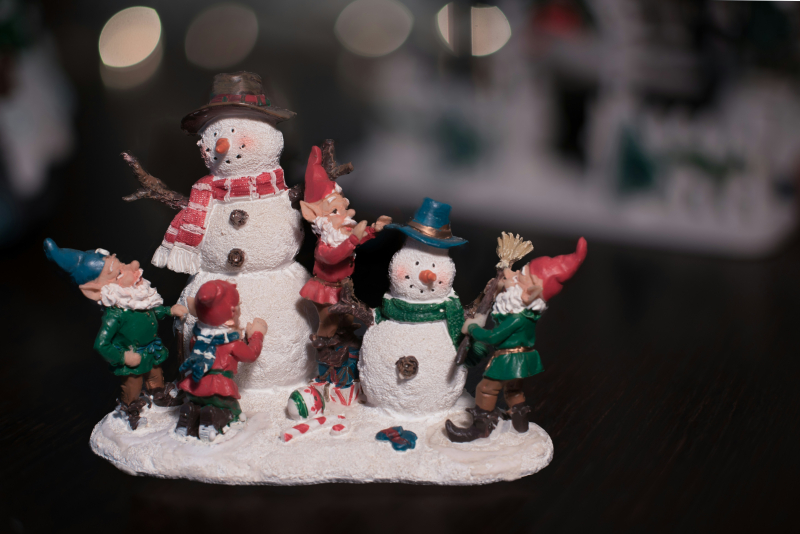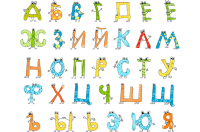Contents:
Beginner (A0)
The A0 level is for you if you have little or no prior knowledge of the Russian language. It’s an absolute start of the language-learning journey – and this is when animation with more emphasis on the plot and visuals rather than conversations comes in.
What to watch:
Dialogue-light and visually expressive cartoons
-
Ёжик в тумане (Hedgehog in the Fog) (1975) by Yuri Norstein
-
Сказка сказок (Tale of Tales) (1979) by Yuri Norstein
-
Падал прошлогодний снег (Last Year's Snow Was Falling) (1983) by Alexander Tatarsky
-
Снежные зайчики (Snow Bunnies) (2014) by Elizaveta Manokhina and Polina Manokhina
Auteur animation
-
Два трамвая (Two Trams) (2016) by Svetlana Andrianova
Elementary (A1)
At this level, you can watch short-length animated films; they, as a rule, use neutral vocabulary and simple sentences. There will be no abundance of parts of speech in use – different nouns in the singular for the most part.
What to watch:
Holiday cartoons
-
Снеговик-Почтовик (The Snowman-Postman) (1955) by Leonid Amalrik
Auteur animation
-
Пластилиновая ворона (Plasticine Crow) (1981) by Alexander Tatarsky
-
Жил-был пёс (Once Upon a Dog) (1982) by Eduard Nazarov
-
Мой странный дедушка (My Strange Grandfather) (2011) by Dina Velikovskaya
-
Друзья (Friends) (2012) by Roman Sokolov
Cartoons about culture, history, and ethnography
-
Гора самоцветов (Mountain of Gems) (2004-present) by Alexander Tatarsky, Valentin Telegin, Andrey Kuznetsov, and Konstantin Bronzit
Cartoons about kindness
-
Паровозик из Ромашкова (A Little Locomotive from Romashkovo) (1967) by Vladimir Degtyaryov
Comedy cartoons
-
Бобик в гостях у Барбоса (Bobick Is a Guest of Barbos) (1977) by Vladimir Popov
Popular classics
-
Аленький цветочек (The Scarlet Flower) (1952) by Lev Atamanov
-
Двенадцать месяцев (The Twelve Months) (1956) by Ivan Ivanov-Vano and Mikhail Botov
Pre-intermediate (A2)
Just like with the previous level, cartoons for A2 learners are short, easy to follow, and, though typically neutral in word usage, may come with a handful of words related to Russian culture. There will still be no elaborated subtext or figures of speech (metaphors, comparisons, idioms, etc), if only their less-complex variations.
What to watch:
Educational cartoons
-
В стране невыученных уроков (In the Land of Unlearned Lessons) (1969) by Yuri Prytkov
-
Коля, Оля и Архимед (Kolya, Olya and Archimedes) (1972) by Yuri Prytkov
Cartoons about culture, history, and ethnography
-
Лабиринт. Подвиги Тесея (The Labyrinth. The Feats of Theseus) (1971) by Alexandra Snezhko-Blotskaya
Popular classics
-
Винни-Пух (Winnie-the-Pooh) (1969-1972) by Fyodor Khitruk
-
Котёнок по имени Гав (A Kitten Named Woof) (1976-1982) by Lev Atamanov and Leonid Shvartsman
Intermediate (B1)
B1 learners can master animation with complex sentences, common and stylistically neutral lexicon, and a tinge of culture vocabulary.
What to watch:
Educational cartoons
-
Фиксики (The Fixies) (2010-present) by Vasiko Bedoshvili, Andrey Kolpin, and co.
Holiday cartoons
-
Зима в Простоквашино (Winter in Prostokvashino) (1984) by Vladimir Popov
-
Мультфильм про Ёжика и Медвежонка: Зимняя сказка (Cartoon about Hedgehog and Bear: Winter's Tale) (1981) by Yuri Butyrin
Cartoons about culture, history, and ethnography
-
Северная сказка (Northern Tale) (1979) by Rasa Strautmane
Science fiction
-
Тайна третьей планеты (The Mystery of the Third Planet) (1981) by Roman Kachanov
Where to watch
Most of these and many other Russian cartoons can be watched online on YouTube or its Russian counterpart RuTube, VK, Kinopoisk (requires a subscription), as well as Kultura RF Live and Arzamas Academy (for auteur animation).
Read also:
Having a hard time studying Russian on your own? Come and join ITMO’s Russian Speaking Club to have exciting conversations, delve into Russian culture and history, and enjoy Russian books and movies in good company.




